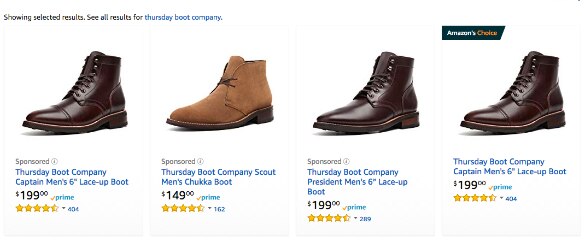2. Design your merchandising strategy deliberately
Amazon’s Marketplace can be an enormous source of revenue, but it can also become your biggest competitor. If there’s a lesson to be learned here, we can learn it from German knife-maker Wüsthof.
Four years ago , Amazon stopped adhering to Wüsthof’s Minimum Advertised Price (MAP). The retail giant began heavily discounting their products in an effort to provide the lowest prices in the market to consumers. The German knife-maker cut ties with Amazon, and still to this day, doesn’t use Amazon to sell their products.
However, this didn’t stop Amazon from sourcing Wüsthof knives through third-party sellers. What this means is that we should treat Amazon symbiotically.
Amazon has people whose job is to actively source the products that they know customers want. Thursday Boot Company, for example, deliberately designs their product strategy with this in mind.
On Amazon, they have a very small selection of their products to choose from compared to their online store, which features a wider variety. They choose the staples - their best-sellers - that will give them the most exposure and cut-through on Amazon’s marketplace, and then keep new releases and a wider selection available on their site.










